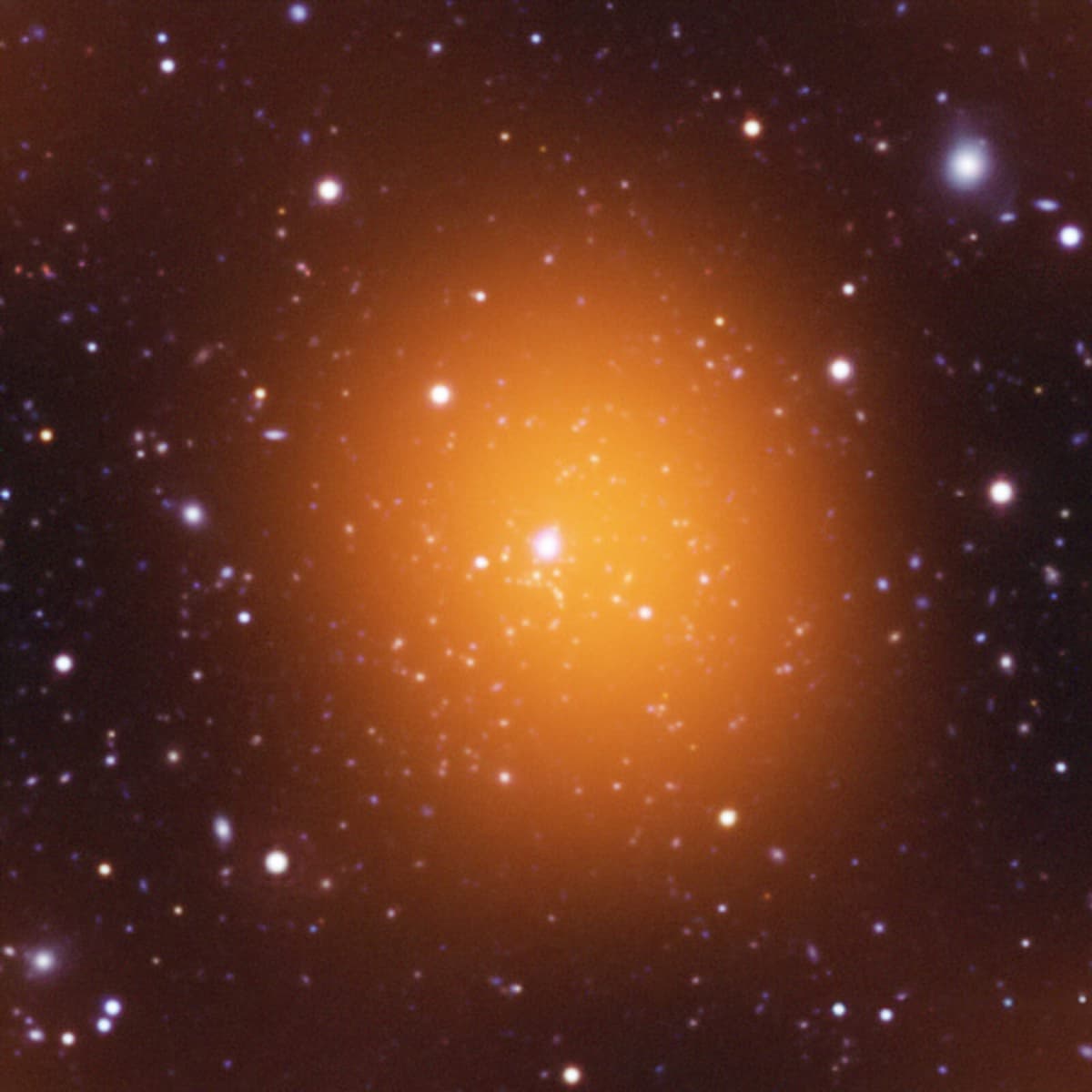Spotlight Live: The Phoenix Galaxy Cluster
by Bruce Lieberman
The cluster's starbursting central galaxy is forcing astronomers to re-think how galaxy clusters form and evolve

The Author
The Researchers
THE DISCOVERY OF THE PHOENIX CLUSTER and its central galaxy producing 740 stars per year, is prompting astronomers to re-think how galaxy clusters, among the largest structures in the universe, form and evolve over cosmic time. On August 28, science writer Bruce Lieberman asked questions from the public about this incredible discovery to Hubble Fellow Michael McDonald, a researcher at the Kavli Institute for Astrophysics and Space Research at MIT and also the lead author of the paper about the discover that appeared in the journal Nature, and Bradford Benson, a researcher at the Kavli Institute for Cosmological Physics at the University of Chicago and a co-author of the paper in Nature.
About the Participants
- Bradford Benson is a fellow at the Kavli Institute for Cosmological Physics at the University of Chicago. An experimental cosmologist, Benson focuses on measurements of the temperature and polarization anisotropies of the cosmic microwave background (CMB), clusters of galaxies, studies of structure formation, and the development of sub-millimeter and millimeter-wavelength detectors. “I am interested in clusters of galaxies from a purely astronomical perspective. Galaxy clusters are one of the few families of objects in which we can observe the distribution of the three dominant matter components in the universe; stars and galaxies, hot gas, and dark matter. Through multi-wavelength observations, we can learn about the interplay of these components; including the history of galaxy formation.”
- Michael McDonald is a Hubble Fellow at the MIT Kavli Institute for Astrophysics and Space Research, at the Massachusetts Institute of Technology. He has conducted near-infrared surveys of the Virgo Galaxy Cluster, and studied the filaments of matter in the cool cores of galaxy clusters as well as the medium between galaxies within clusters. “My current research is focused on understanding heating and cooling processes in the cores of galaxy clusters. By necessity, this work requires use of a wide variety of data, including X-ray, UV, optical, IR, sub-millimeter, and radio observations. In collaboration with the South Pole Telescope (SPT) team, I am trying to understand the evolution of a sample of massive galaxy clusters.”
- Bruce Lieberman is a freelance journalist with more than 20 years of experience in the news business. He worked as a reporter at daily newspapers for many years before becoming an independent writer and editor in 2010. For The Kavli Foundation, Bruce has interviewed researchers about dark matter and dark energy, string theory, the emergence of the first stars and galaxies, exoplanets and nomad planets. He has also written for Scientific American about the next generation of large segmented mirror telescopes, the search for life on Mars, the Voyager spacecraft and other subjects.